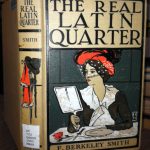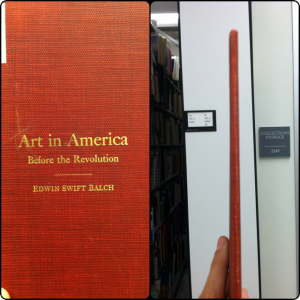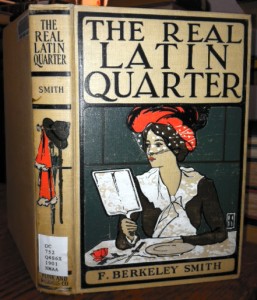
–This post was contributed by Kimberly Lesley, American Art and Portrait Gallery Library intern, summer 2012.
This summer I had the opportunity to work on two projects at the Smithsonian American Art Museum/National Portrait Gallery Library: evaluating titles from the print reference section and selecting public domain titles for digitization. The majority of time was spent on the former, evaluating once heavily relied upon indexes and reference titles against databases and open access online resources. As I paged through volumes of reference titles I was grateful for the vast amounts of information available online with a few keywords and a couple clicks. Researching periodicals painstakingly indexed by fastidious librarians and researchers reinforced the knowledge that there is much information contained within these pages that has yet to be replicated online. The value of these print resources lies in their coverage of the more inconspicuous subjects of research. When conducting a basic online search for an obscure artist or person of lesser fame, one can become lost in a sea of names and a flood of social networking profiles. As institutions continuously shift from ownership to subscription models many questions of perpetuity of access arise. A damaged book may be sent to the skilled hands of a conservationist, but when a company ceases to provide access to proprietary databases, researchers could be left in an information desert. With this in mind, I erred on the side of caution, only recommending titles for deaccession when they were completely covered online and held at other Smithsonian libraries, or unrelated to the scope of the collection.
 These considerations were also at the forefront of my thoughts as I selected public domain items for digitization. Searching the AA/PG’s pre-1923 collection I selected items supporting collection highlights, and curatorial research in the subjects of American art, portraiture and biography. While searching the stacks I took great enjoyment in discovering the ornate bookbinding of titles such as D’Anvers’ Elementary History of Art and the visual irony of a very thin copy of Art in America Before the Revolution. I must admit, my predilection for illustration meant a few titles not on my pull list found their way to the selection cart. Some of my favorite images were in The Real Latin Quarter, a book featuring photographs of Paris’ Latin Quarter at the turn of the 20th century often accompanied by quaint captions.
These considerations were also at the forefront of my thoughts as I selected public domain items for digitization. Searching the AA/PG’s pre-1923 collection I selected items supporting collection highlights, and curatorial research in the subjects of American art, portraiture and biography. While searching the stacks I took great enjoyment in discovering the ornate bookbinding of titles such as D’Anvers’ Elementary History of Art and the visual irony of a very thin copy of Art in America Before the Revolution. I must admit, my predilection for illustration meant a few titles not on my pull list found their way to the selection cart. Some of my favorite images were in The Real Latin Quarter, a book featuring photographs of Paris’ Latin Quarter at the turn of the 20th century often accompanied by quaint captions.

It is exciting to know that soon these titles will be freely accessible through the collaborative efforts of many Smithsonian employees, enabling new levels of research to be conducted online while aiding in preservation of library materials. I was continually impressed by the enthusiasm and dedication of everyone I met during my internship, and am grateful for this rewarding opportunity. While I periodically check Internet Archive for my selected titles I will be continuing on yet another project- harvesting images from the Smithsonian’s digitized book collection on Internet Archive to be added to the Galaxy of Images database.
–Kimberly Lesley.

Be First to Comment